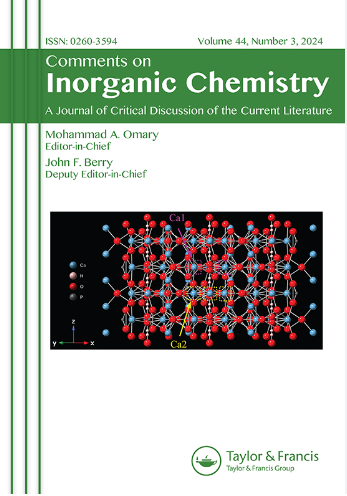双膦铁催化C(SP2)-C(SP3)交叉偶联反应的机理:内球还是外球芳基化?
IF 3.8
3区 化学
Q1 CHEMISTRY, INORGANIC & NUCLEAR
引用次数: 8
摘要
在这篇评论中,我们介绍了对双膦-铁催化的C(sp2)-C(sp3)交叉偶联反应(CCRs)机制的最新见解,重点关注了我们团队和其他人通过量子力学计算揭示的C-C键形成事件(内球与外球)的性质。讨论了对反应和催化剂设计原则的启示。图形抽象本文章由计算机程序翻译,如有差异,请以英文原文为准。
Mechanisms of Bisphosphine Iron-Catalyzed C(SP2)-C(SP3) Cross-Coupling Reactions: Inner-Sphere or Outer-Sphere Arylation?
In this comment, we present recent insights into the mechanism of bisphosphine-iron catalyzed C(sp2)-C(sp3) cross-coupling reactions (CCRs) with the focus on the nature of the C-C bond formation event (inner-sphere versus outer-sphere) as revealed by quantum mechanical calculations from our group and others. Implications for reaction and catalyst design principles are discussed. Graphical Abstract
求助全文
通过发布文献求助,成功后即可免费获取论文全文。
去求助
来源期刊

Comments on Inorganic Chemistry
化学-无机化学与核化学
CiteScore
9.00
自引率
1.90%
发文量
18
审稿时长
>12 weeks
期刊介绍:
Comments on Inorganic Chemistry is intended as a vehicle for authoritatively written critical discussions of inorganic chemistry research. We publish focused articles of any length that critique or comment upon new concepts, or which introduce new interpretations or developments of long-standing concepts. “Comments” may contain critical discussions of previously published work, or original research that critiques existing concepts or introduces novel concepts.
Through the medium of “comments,” the Editors encourage authors in any area of inorganic chemistry - synthesis, structure, spectroscopy, kinetics and mechanisms, theory - to write about their interests in a manner that is both personal and pedagogical. Comments is an excellent platform for younger inorganic chemists whose research is not yet widely known to describe their work, and add to the spectrum of Comments’ author profiles, which includes many well-established inorganic chemists.
 求助内容:
求助内容: 应助结果提醒方式:
应助结果提醒方式:


